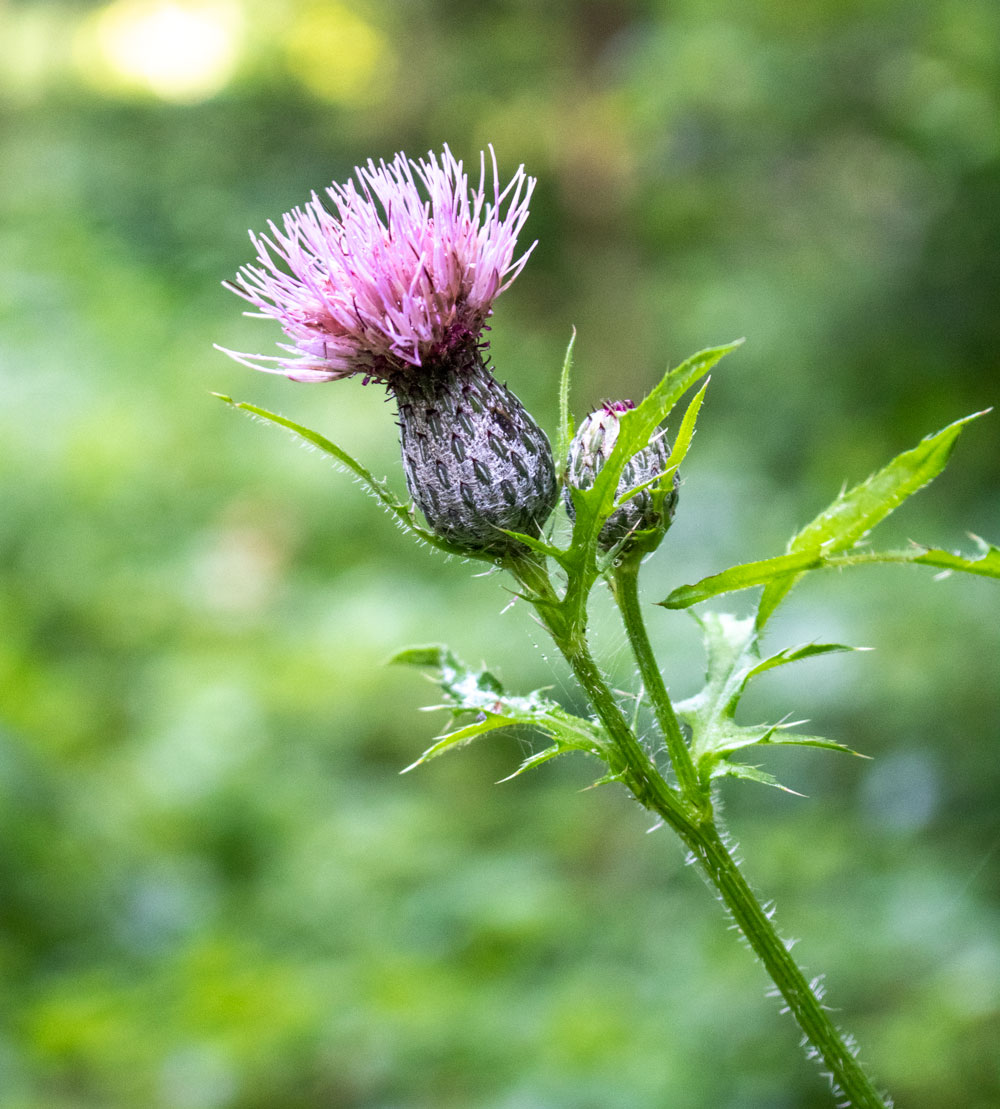
Toward the end of the summer, during our daily walks, I look forward to viewing our blooming swamp thistles. Every year, during the months of July and August, these flowers brighten up one of the corners hidden deep in the woods. These flowers will appear in different parts of this area that is covered in moss and located close to a babbling brook. Even more excited by their presence than I am are the several pollinators and woodland creatures that benefit from these botanical gems. I often observe several butterfly species and bumblebees enjoying their delicious nectar.
In this post, I will share some information about swamp thistles as well as a few photographs of these thistle species.
Other Names for Swamp Thistle
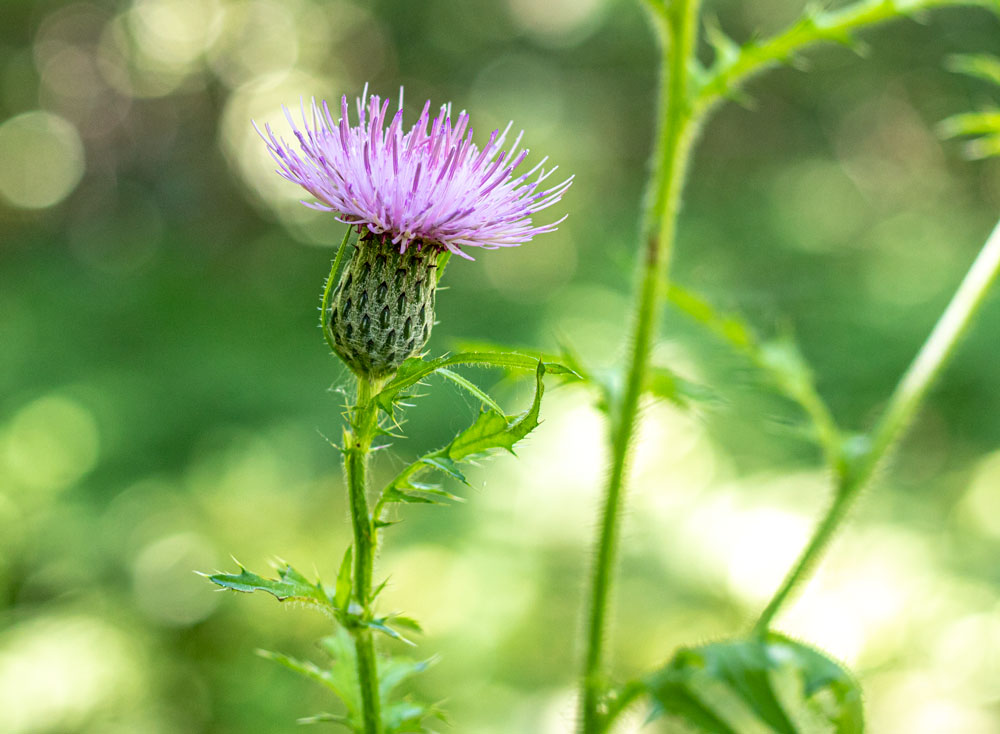
Cirsium muticum, also known as swamp thistle, marsh thistle, dunce-nettle, or horsetops. Carduus muticum is an older name for this plant and is no longer in use. The genus Cirsium is from the Greek word kirsion – for a particular thistle and has been adopted for a number of plants generally not appreciated by gardeners. Reasons include their being painful to touch, as well as stealing sunlight, nutrients, and water from plants that are wanted in gardens. The species muticum means blunt – without a point, referring to blunt leaf lobes of the lower leaves and relatively few spines on this thistle.
Distribution
These thistles are a North American species of plants in the sunflower and daisy family Asteraceae, native to central and eastern Canada and the central and eastern United States. To be more specific, swamp thistle is very widely distributed across the eastern half of North America from the prairies of southeastern Saskatchewan across southern Canada to Newfoundland and south in the United States from North Dakota and Maine to southeastern Texas and northern Florida. It is more common in the northern half of this range and extends from the coastal plain to the Appalachian highlands.

When Do They Bloom?
The blooming period of the swamp thistle occurs through summer from late June to September.
Description
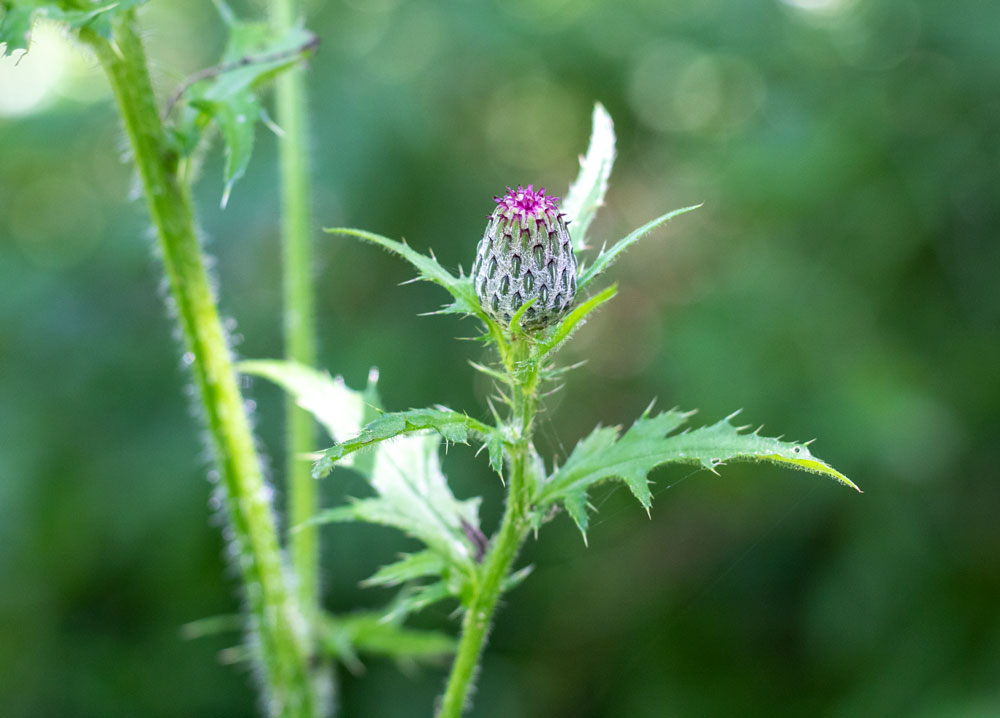
The Swamp thistle produces vibrant flowers and is weakly armed compared to other thistles. It is a biennial with a tap root, not a rhizomatous root like some aggressive, non-native thistles such as bull thistle Cirsium vulgare or Canada thistle Cirsium arvense. It is very beautiful with big spikey purple to pink flowers and the base has cobwebby white hairs, and it is often slightly sticky. The floral arrangement consists of one to many stalked flower heads in an open panicle or corymb type array. Its hollow six-foot stem has no spines and its deeply cut leaves look pointy but aren’t very sharp. The leaves are alternate in position, pinnately lobed, and ovate in shape. It reaches a flowering stage in year two before dying off. It is an active self-seeder though, so the cycle will continue as long as it sets seed. The flowers mature to a dry cypsela that has attached some whitish to tan fuzzy pappus for wind dispersion. It is best grown in full sun to moderate shade in wet soils.
Habitat
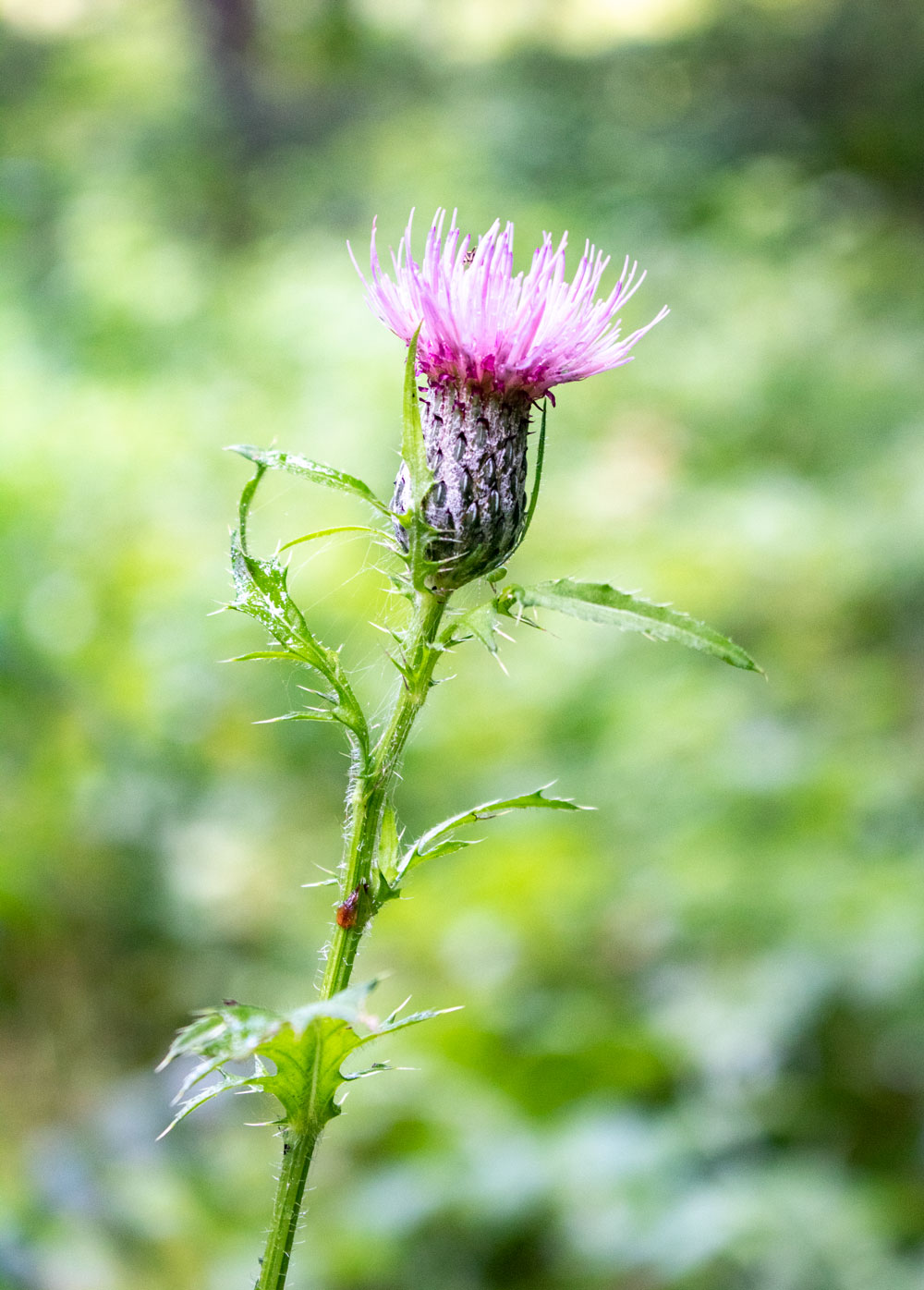
Swamp thistle prefers full sun in moist soils of marshes, alkaline swamps, wetlands, marshes, bogs, and low forests but some species have been known to grow in wet alpine climates.
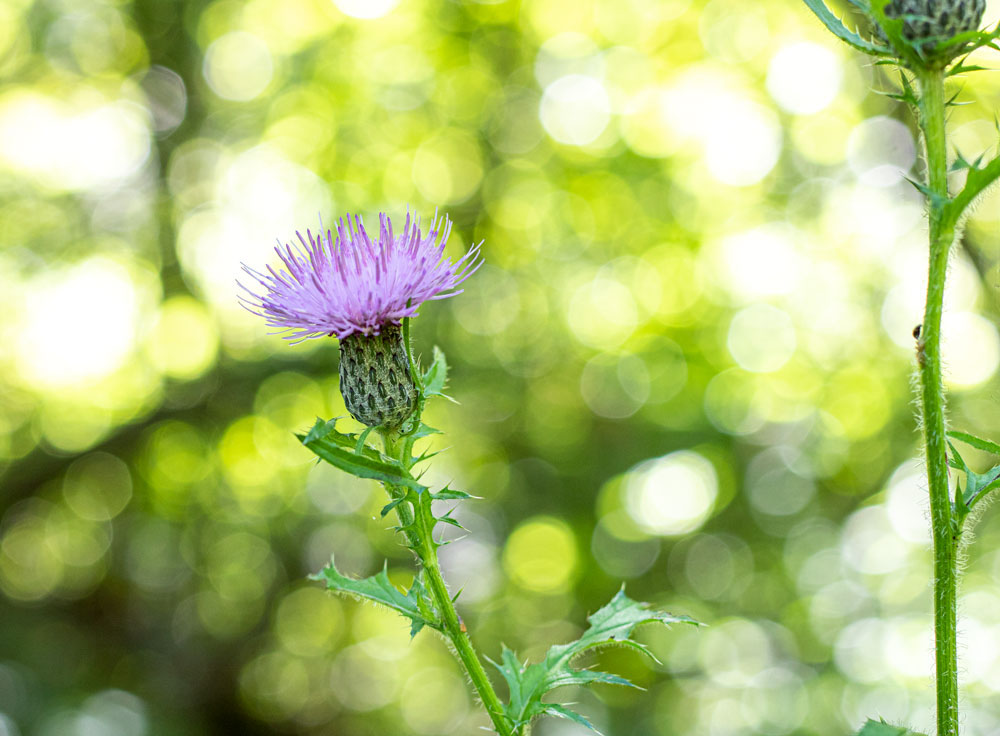
Ecology
Swamp thistle host a wide diversity of native herbivorous insects, including thistle enjoyers feeding on stems, leaves, seeds, and flower parts. Pollinators such as butterflies Lepidoptera, bumblebees Bombus, and hummingbird clearwing moths Hemaris diffinis make use of the rich nectar source. It serves as a host for some species of butterflies and moths, including the swamp metalmark butterfly Calephelis muticum. The butterfly lays its eggs on the swamp thistle, and when the eggs hatch, the flowers are the only food source for these caterpillars. It is also a larval host to the painted lady butterfly Vanessa virginiensis. The ruby-throated hummingbird Archilochus colubris also occasionally visits the flowerheads of swamp thistles for their nectar.
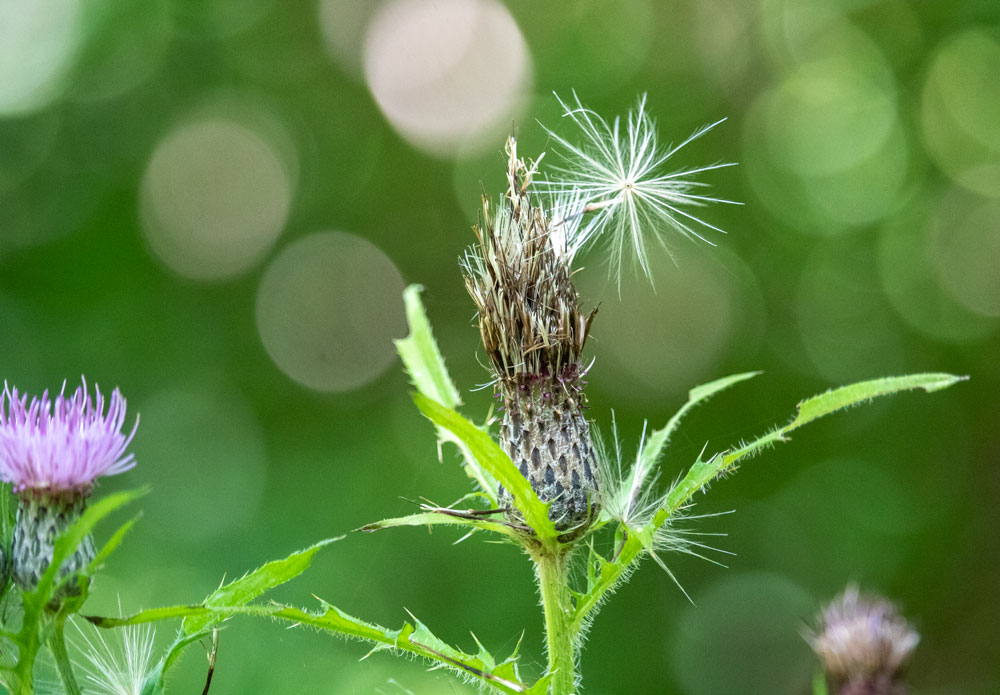
Thistle seeds also benefit songbirds such as American goldfinches Spinus tristis. These finches nest late in the season, in July and August. They feed on thistle seeds and use fibers on the seed heads (thistledown) to line their nests. Unlike other birds, these finches feed seeds (not insects) to their young, so their life cycle requires adequate late-season seeds and grains.

Swamp thistles are not only ascetically pleasing but are also important ecologically. I hoped you enjoyed learning about these beneficial thistles and thank you for reading.
Leave a Reply